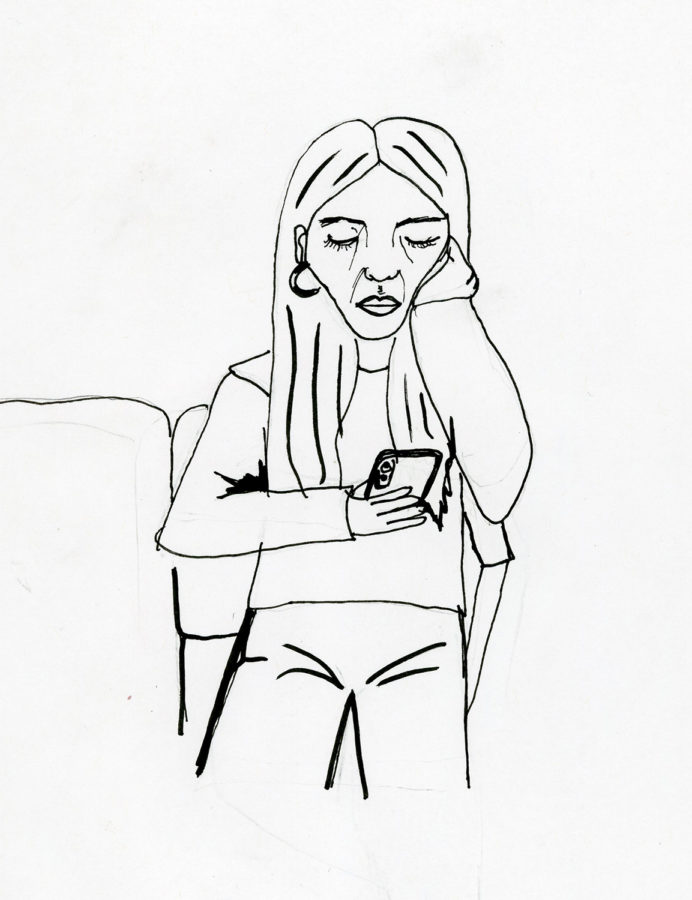The slippery slope of social media activism
Every morning I go through my followers’ Instagram stories in a pathetic attempt to wake myself up (I know that there are thousands of studies about why this is not healthy, but that is an issue for post-New Year’s Phoebe to figure out). With my eyes barely open, I swipe through birthday posts, Kacey Musgraves’s annoyingly long but heartwarming stories, and images reposted as a form of activism.
In a sample survey of 41 Urban students with a 15% accuracy rate, 70.7% say that they use social media multiple times a day. This statistic is not surprising as social media use has been ingrained into the everyday lives of a large portion of my generation. Social media is simultaneously powerful and useless as a platform for activism: posts can both gain rapid exposure and become lost among the millions of images, videos, and tweets posted each day.
Out of the previously mentioned survey, the same 70.7% of students who said they use social media multiple times a day said that they regularly see activist content, specifically on Instagram. This frequency of online activism is the result of how easy it has become to mass share messages in a few words and images, often resulting in what is now known as “virtue signaling.”
When you type “virtue signaling” into Google, the given definition is: “the action or practice of publicly expressing opinions or sentiments intended to demonstrate one’s good character or the moral correctness of one’s position on a particular issue.” In other words, when someone is virtue signaling, they are putting the spotlight on themselves and their virtues instead of the issue they are claiming to support, thereby undermining the potential power of social media activism.
Virtue signaling through social media can be identified by the disparity between a user’s post and their lifestyle. Frequently, a classmate of mine will repost an image to their Instagram story of some unknown beach filled with plastic bottles. Each image is adorned with “Guys, we need to stop this” in bright blue letters. Every time I see this, I question who is included in the “we”; the plastic water bottles they bring to class every morning make it clear that it does not include them. Now, I don’t want to pass judgment on other people’s perceptions of personal environmental responsibility, but this seems extremely hypocritical. Clearly, the environmentally-responsible self they show to their 1000 Instagram followers does not match their real-life environmental ethics. By showcasing their superficial virtues and social engagement online, they were using social media activism solely for clout.
Social media has made virtue-signaling easy because of how quickly one post can reach a large crowd of people and by being a platform that is built around and often encourages vanity. So, it is no wonder that the majority of surveyed Urban students say they regularly encounter socially active content.
Social media can reduce activism to a trend. As a result, importance and urgency are stripped from the issue as it circulates among people who won’t actually do anything to create change. If anything, it can be a deterrent to change outside of digital spaces because viewers become convinced that simply posting and reposting images is enough to feel like they contributed their part.
This is not true for all social media activism. The #blacklivesmatter and the #metoo movements both started on social media, using the power of the platform to begin conversations outside of the digital realm. Even on a smaller scale, I sometimes see posts that provide me with the phone number of a representative I can call or other ways that I can genuinely help. These social media movements of activism are different than my friend’s shallow concern for beaches they’ve never been to. By focusing on the issue rather than the user who posted it, these movements call on me and other users to participate in social engagement outside of five-second Instagram stories.
Social media can be a powerful platform for activism, and it is defined by every participant’s intentions. When the intention is entirely self-centered and focuses only on the image of the person posting it, it reduces social activism to a trend rather than a societal responsibility. So, instead of posting that photo of a trash-filled beach, it might be time to pick up that piece of trash outside your house.


